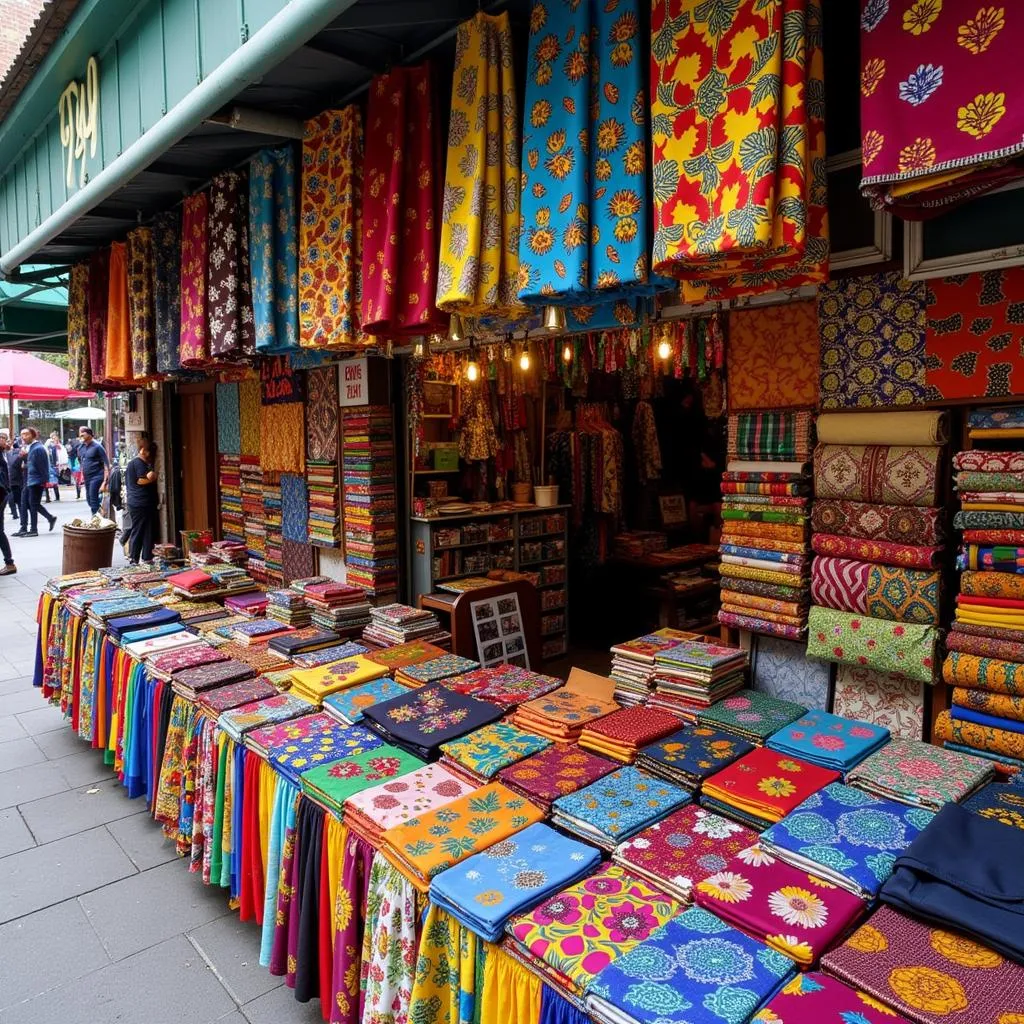What is African Costume Called?
African attire is a vibrant tapestry of diverse cultures, each with unique names for their clothing. Instead of a single term like “African costume,” you’ll find a fascinating array of names reflecting the continent’s rich heritage. Let’s explore the captivating world of African clothing and discover the specific terms used across different regions and cultures.
A Continent of Diversity: Why There’s No Single Name for “African Costume”
Africa, with its 54 countries and thousands of ethnic groups, boasts an incredible diversity of traditional clothing. Each group has developed its own distinct styles, fabrics, and terminology over centuries.
 West African Kente Cloth
West African Kente Cloth
For example, the flowing robes of the Tuareg people in North Africa differ drastically from the beaded garments of the Maasai in East Africa. To label them all under a generic term like “African costume” would be a gross oversimplification, ignoring the unique history and craftsmanship embedded in each piece.
Exploring Regional Styles and Names
Here’s a glimpse into the terminology used for traditional clothing in different regions of Africa:
West Africa:
- Kente: This brightly colored, handwoven cloth from Ghana and Togo is a symbol of royalty and prestige.
- Boubou: A flowing, wide-sleeved robe worn by both men and women in many West African countries, often made from vibrantly patterned fabrics.
- Dashiki: A colorful, loose-fitting tunic for men, often embroidered or adorned with intricate patterns.
East Africa:
- Kanga: A rectangular piece of fabric with a printed message (often a proverb) worn by women in Tanzania, Kenya, and other East African nations.
- Shuka: A blanket-like garment worn by the Maasai people, typically red with checkered patterns.
- Kanzu: A long, white or cream-colored robe worn by men in Uganda, Tanzania, and other parts of East Africa, often paired with a jacket called a “beshti.”
Southern Africa:
- Madiba shirt: Made famous by Nelson Mandela, this brightly patterned, loose-fitting shirt is now a global fashion statement.
- Shweshwe: A printed cotton fabric, often in geometric patterns, widely used in South Africa for dresses, skirts, and shirts.
North Africa:
- Djellaba: A long, loose-fitting unisex robe, often hooded, worn in Morocco, Algeria, and Tunisia.
- Burnous: A large, woolen cloak common in North Africa, typically worn over other clothing for warmth and protection from the elements.
The Importance of Cultural Sensitivity
When referring to traditional clothing from Africa, it’s essential to use respectful and accurate terminology. Avoid generic terms like “tribal wear” or “native costume,” as they can be insensitive and perpetuate harmful stereotypes.
 East African Maasai People in Traditional Attire
East African Maasai People in Traditional Attire
Instead, take the time to learn about the specific names and significance of garments from different cultures. By using appropriate terminology, we demonstrate respect for the rich heritage and cultural diversity that Africa has to offer.
Beyond “African Costume”: Fashion, Identity, and Modern Expression
Traditional African clothing is far more than just attire; it’s a powerful expression of identity, history, and cultural pride. In today’s world, African fashion designers are drawing inspiration from their heritage while incorporating modern elements, creating unique and innovative designs.
From the runways of international fashion shows to everyday wear, African clothing continues to evolve, reflecting the continent’s dynamic cultural landscape.
FAQs About Traditional African Clothing
1. What is the most popular fabric used in African clothing?
Cotton is the most common fabric, prized for its breathability and versatility. However, silk, wool, leather, and raffia are also used, depending on the region and occasion.
2. What is the significance of beadwork in African clothing?
Beadwork often holds deep cultural and symbolic meaning. Different colors and patterns can represent social status, age group, marital status, or spiritual beliefs.
3. Can I wear traditional African clothing as a non-African?
It’s important to approach cultural appropriation with sensitivity. While it’s wonderful to appreciate African clothing, avoid wearing it in a way that could be disrespectful or exploitative. If you’re unsure, it’s always best to err on the side of caution.
Discover More About the Beauty of African Textiles and Fashion
This is just a glimpse into the vast and diverse world of African clothing. Explore further and discover the beauty, symbolism, and cultural significance behind each garment! To learn more about African dance, music, and festivals, check out this helpful resource: africa festival dance & music from african countries.
If you need assistance, our customer service team is available 24/7. Contact us at +255768904061, email kaka.mag@gmail.com, or visit our office located at Mbarali DC Mawindi, Kangaga, Tanzania.
